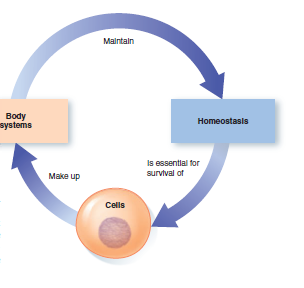
Functional Organization of the Human Body and Control of the “Internal Environment
Body cells can live and function only when the ECF is compatible with their survival; thus, the chemical composition and physical state of this internal environment must be maintained within narrow limits.Maintenance of a relatively stable internal environment is termed homeostasis (homeo means “similar”; stasis means “to stand or stay”). The functions performed by each body system contribute to homeostasis, thereby maintaining within the body the environment required for the survival and function of all cells. Cells, in turn, make up body systems. This is the central theme of physiology. Homeostasis is essential for the survival of each cell, and each cell, through its specialized activities as part of a body system, helps maintain the internal environment shared by all cells.
Students will be able to learn
1. Functional organization of human body
2. Homeostasis
3. Control systems in the body


